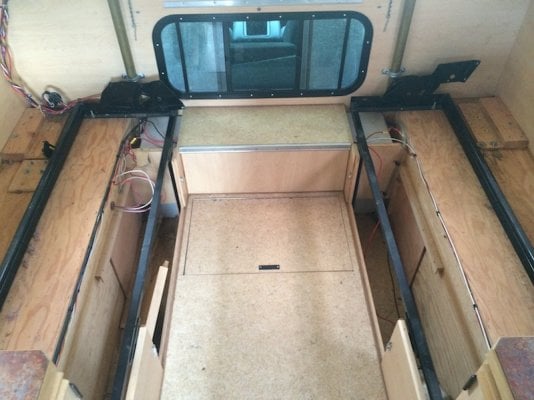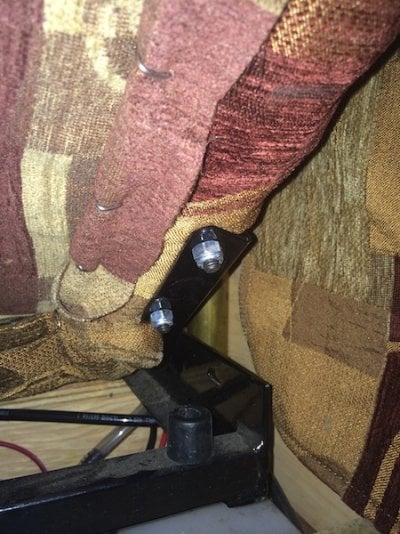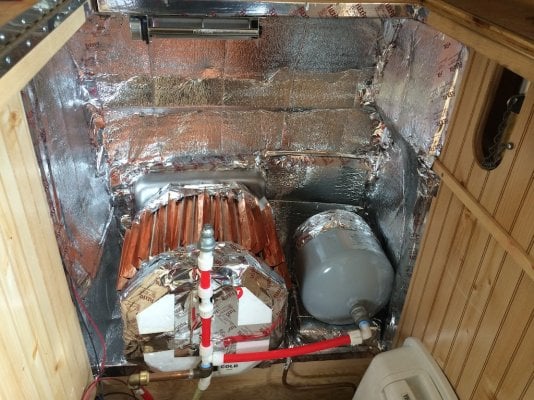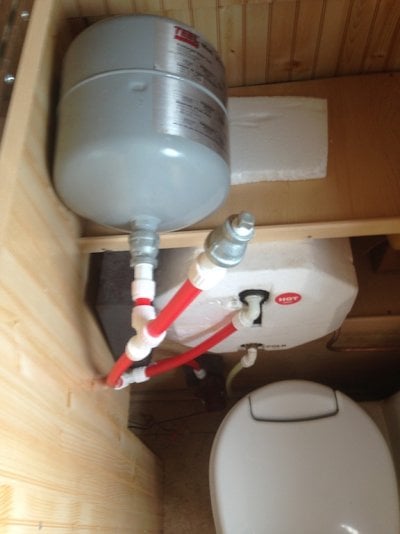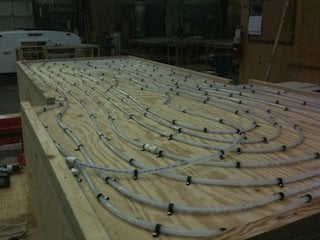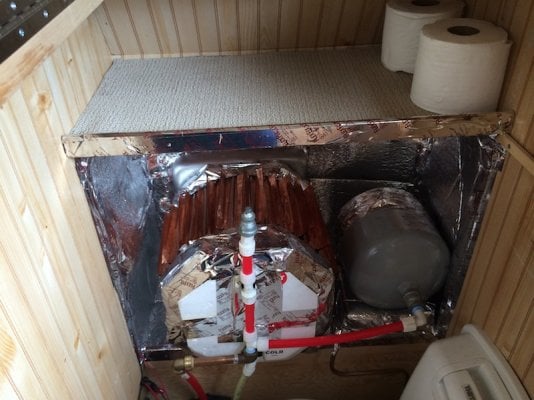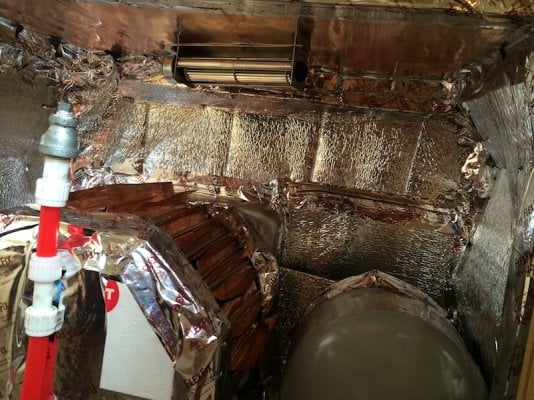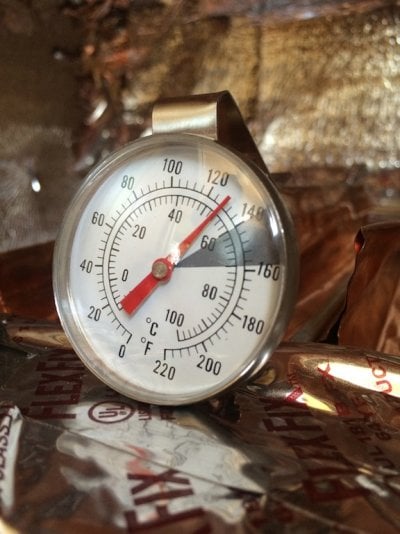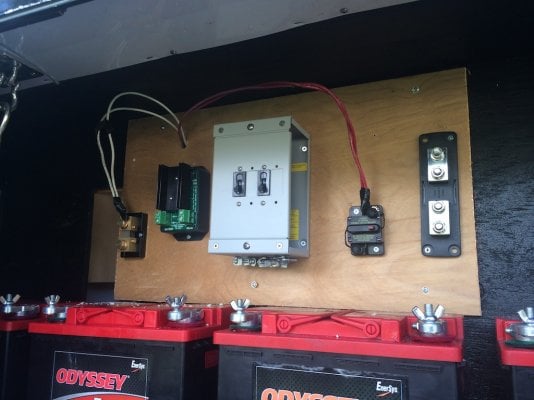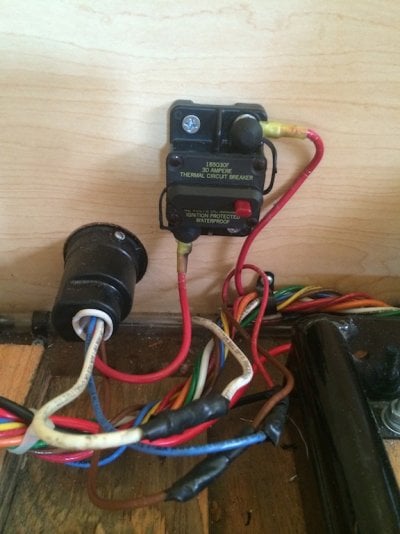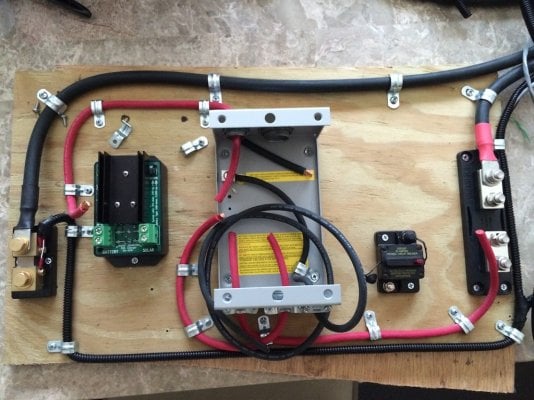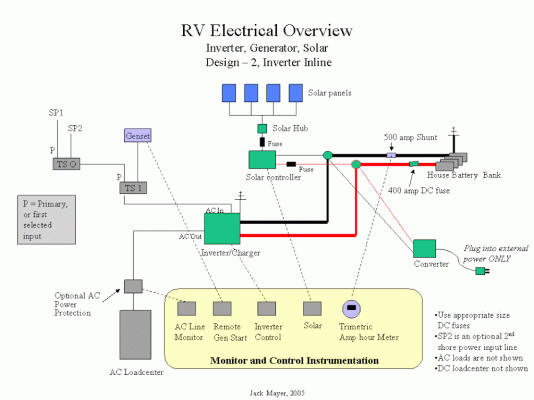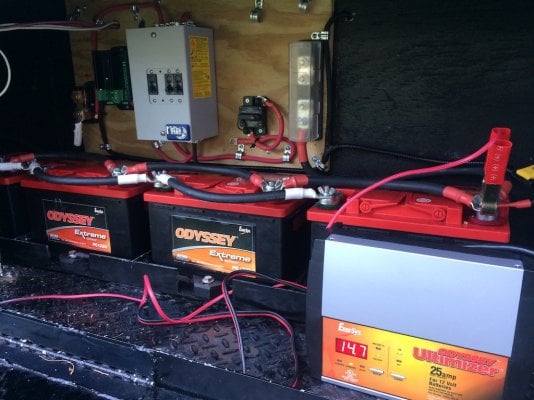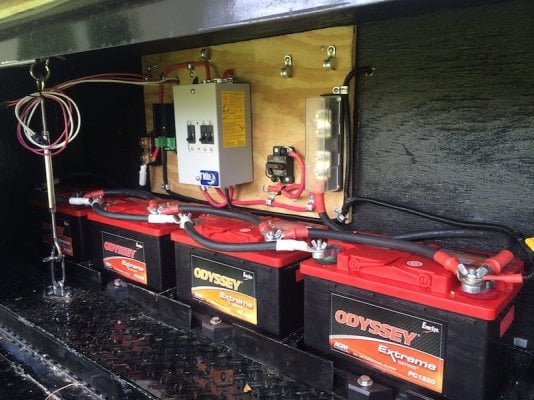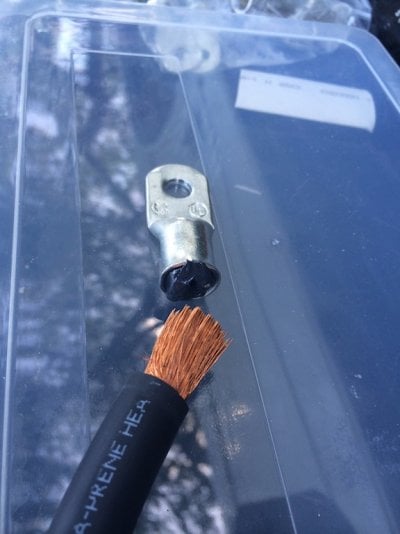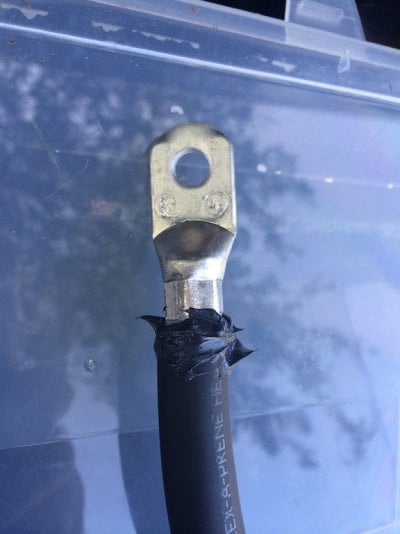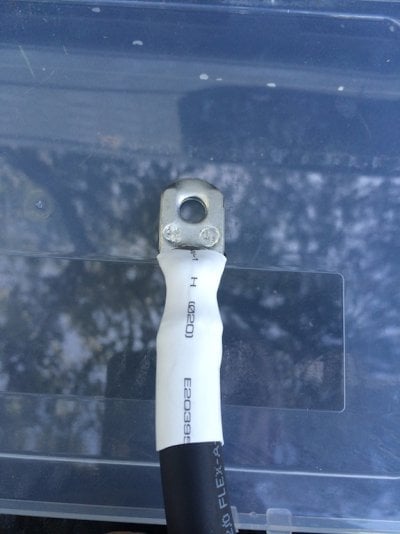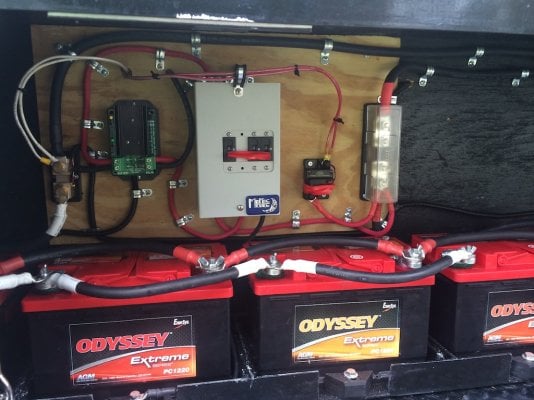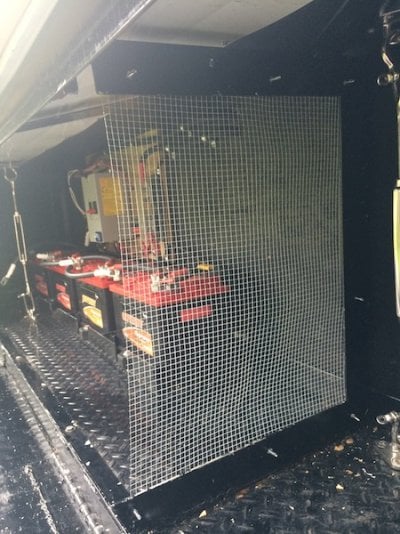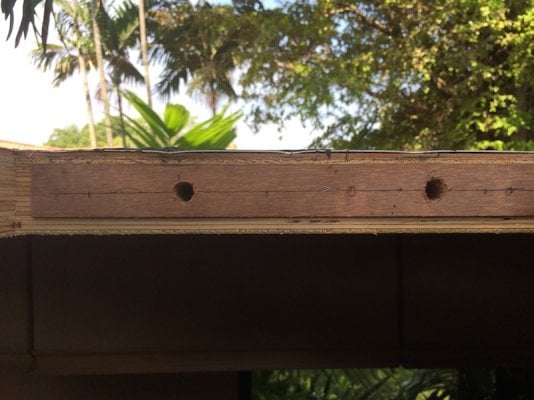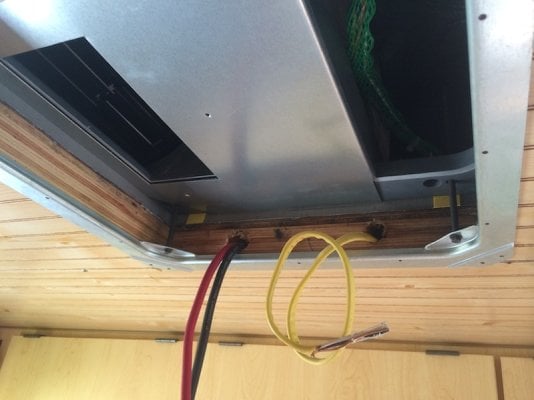Working template for Solar DC configuration. The final configuration will be on 1/2 pressure treated
After reading everything I could find I purchased a Go Power Solar system then I found Jack and Bob's blog. I was headed for a cluster F...
Study their blogs before you buy anything, it will save you big $$, a lot of wasted time and ending up with Solar and a Genset
I found Bob through WTW.
http://handybobsolar.wordpress.com and through HandyBob I found Jack Dananmayer at
http://www.jackdanmayer.com.
I have kept the best (and most expensive) of the Go Power, the panels and inverter and added a TM 2030 battery monitor and a SC-2030 Solar Charger both by Bogart Engineering along with a 500 amp shunt, Midnite Big Baby Box with two 30 amp CB to isolate the charger from the solar and battery.
I replaced the Go Power Class T fuse holder with a Blue Sea.
The biggest change comes in the wiring and location of the Solar Charger. The Go Power wiring is 10 AWG so the voltage drop over 15' would be + 5 volts and the charger is a panel mount which translates to a long way away from the batteries and more voltage drop. The net result is that the panels would never fully charge the house batteries.
I am putting an AM Solar combiner box on the roof to avoid paralleling the two 115 watt /15 amp panels with MC connectors on 10 AWG cables.
The 15' cable run from the combiner box to the charger mounted next to the batteries will be with 4AWG welding cables. The voltage drop should be in the area of 1.3 volts which is acceptable
The battery bank is sized as close as I can to one amp of storage to one watt of power which translates to 280 amps of storage to 310 watts of solar capacity.
The wiring runs I will make myself.
.

